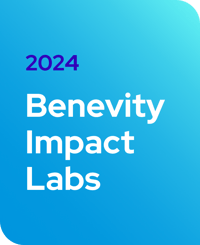 The State of
The State of
Corporate
Volunteering
Driving impact in a hybrid world
Feb 6, 2024
Key insights
- Employee volunteering has soared in the past three years. The influx of new volunteers represents a significant opportunity to drive lasting impact.
- Corporate volunteering has a renewed purpose in a hybrid work environment as a way to deepen employee connection, strengthen company culture and create a sense of community.
- Companies who invest in actively promoting volunteering see the most benefits.
Corporate volunteering takes center stage
In the last three years, there has been a massive surge in corporate volunteering, with 94% of Benevity's clients with employee engagement programs now running volunteering initiatives. Never before have so many companies invested this much into corporate volunteering programs — and gained so much in return.
From park clean-ups to paid volunteer days, volunteering is playing a vital role in addressing some of the big issues companies are facing. It’s deepening employee connection, strengthening company culture, and creating a sense of community in a hybrid work environment.
![]()
Did you know
Employees who participate in corporate purpose programs through volunteering, giving or taking positive actions are 52% less likely to leave their company.
- Talent Retention Study
The enthusiasm for volunteering is consistent with the growing desire among today’s employees for connection, learning, growth and meaning through work. According to 2022 research from McKinsey, 70% of employees said their personal sense of purpose is defined by their work. One Monster survey about Gen Z found that 74% rank purpose ahead of a paycheck, higher than any other generation.
Against this backdrop, we set out to better understand the growth in volunteering and evaluate how to sustain this momentum. Our analysis found that it’s not enough to simply provide opportunities for employees to volunteer on their own — they need a company’s support to get involved.
Driving lasting impact
| Companies who invest in actively promoting corporate volunteerism | see greater participation |
|
reflected in greater business, culture and social outcomes. |
|
|
Companies supporting both company-created and employee-created volunteering opportunities have participation rates that are, on average, 12x the level of those companies employing neither feature. |
Charting volunteer growth
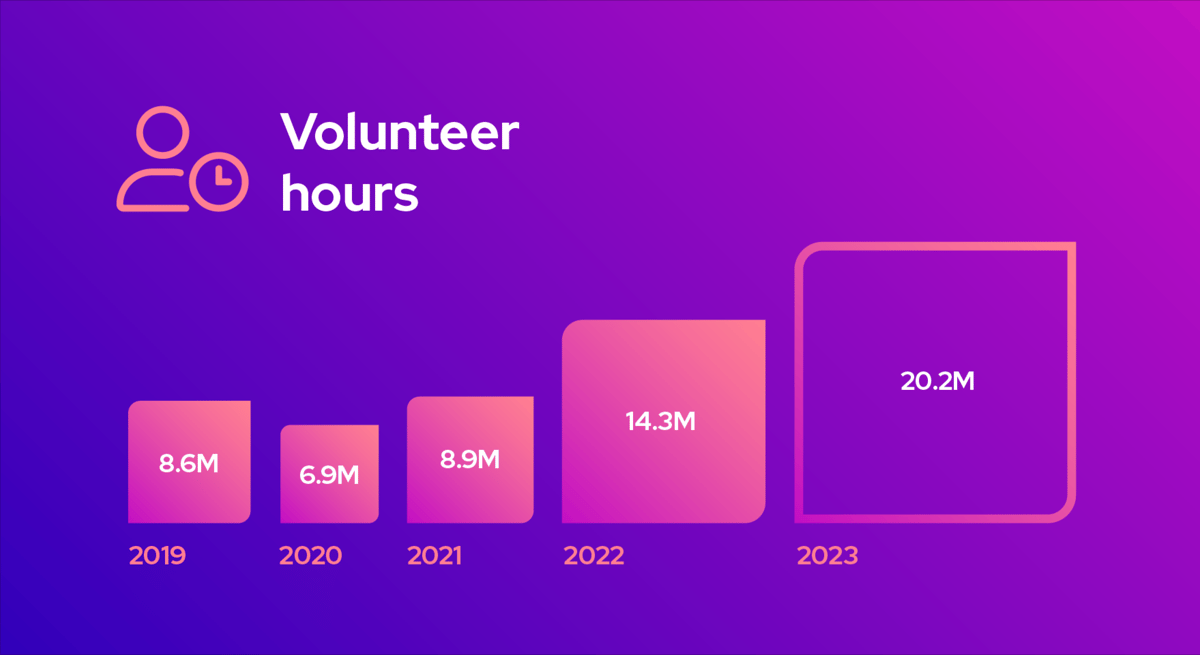
When the world began re-opening in 2021, many loyal volunteers resumed their commitments. It was no surprise to see a surge in the number of volunteers and their hours of participation. There was a similar rise in everything from eating out to travel plans to salon appointments.
Dig into the data, however, and the true scale of the phenomenon emerges: In 2020, when life went virtual, companies and employees found new ways to work and volunteer. In 2021, as the long reopening began, in-person volunteering resumed. Three years later, with hybrid work the new normal, companies are using volunteering as a way to create more connectedness – and volunteer metrics continue to far surpass pre-pandemic levels.

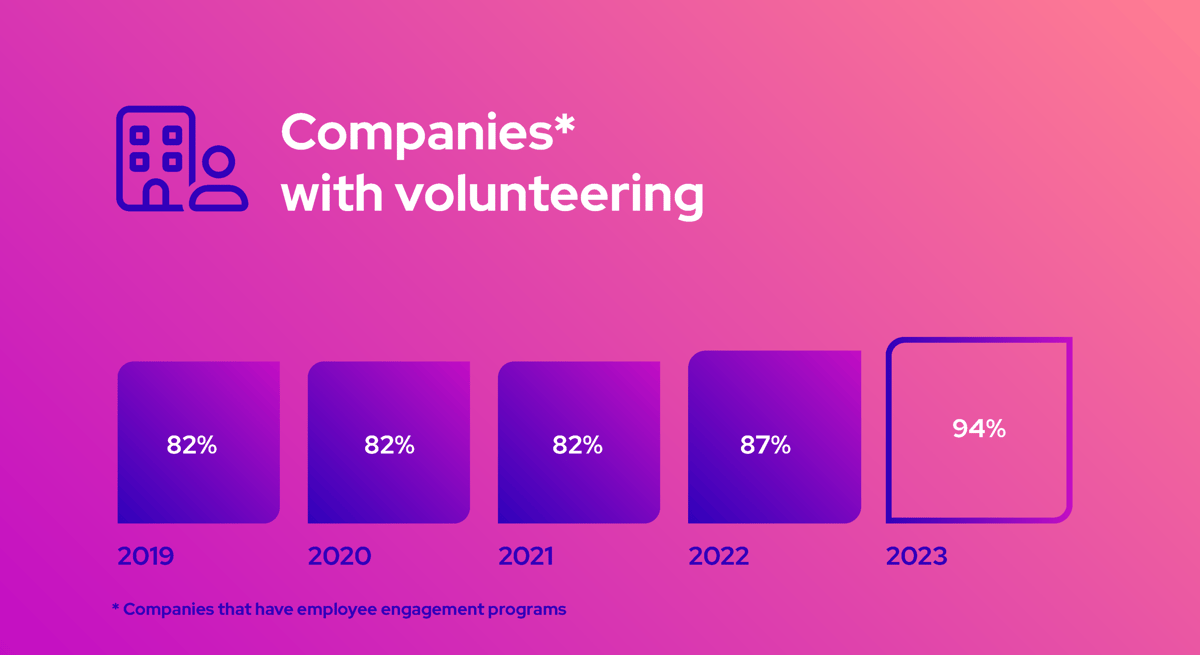
An evolving approach to volunteering
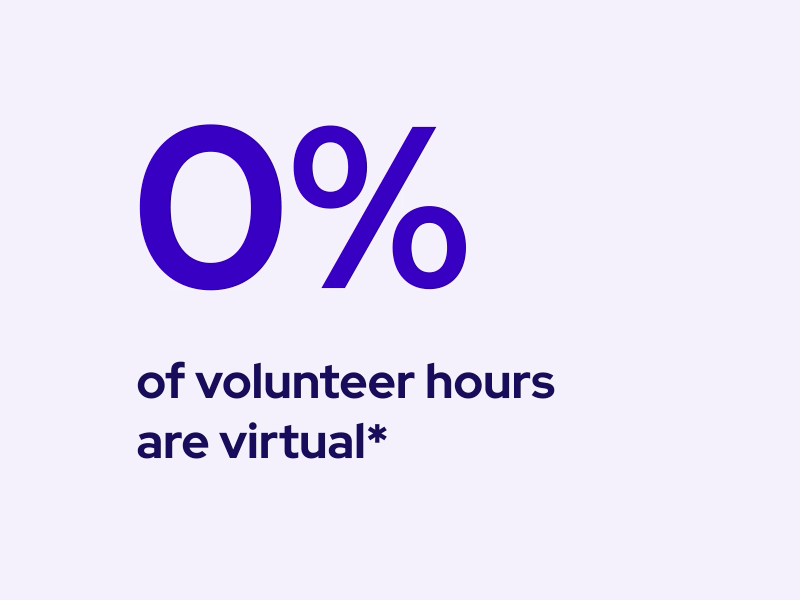
*statistic represents volunteer opportunities only
In a hybrid-friendly world, the way companies think about and define volunteering has evolved. It’s no longer just the traditional view of giving a set time or particular talent to a registered nonprofit. Virtual volunteer opportunities attract a wide range of employees, who can share their time and skills with different organizations in different places from anywhere.
Most companies now also include Volunteer Acts of Kindness❤ (VAOK) which are not tied to a specific nonprofit and include small acts of goodwill as well as things like attending learning sessions hosted by Employee Resource Groups or the company, park and beach clean-ups and more. VAOK can act as an entry point for social action, which makes them popular among Gen Z employees who are not as engaged in traditional volunteering as their millennial or Gen X counterparts.
This expanded definition of volunteering, and the different ways to engage volunteers, has opened the door to allow more employees than ever to participate — and purpose-driven employers to support them.
|
|
Location-based volunteering is at 3.6x the level it was in 2022 and 8.6x the level seen during the depths of the pandemic in 2020. |
Benchmarking volunteer participation
57%
year-over-year increase in volunteering participation
Volunteer growth is a global trend. The global average volunteering participation rate♦ rose to 9.2%, a 57% increase from the previous year’s participation rate of 5.9%. If companies and their people sustain this momentum, imagine what the future holds.
How participation rates compare across companies
While volunteering participation has increased exponentially, a closer look at participation rates by quintile indicates considerable variation across companies. The top performing quintile has a wide range in participation from 15% to 73%.
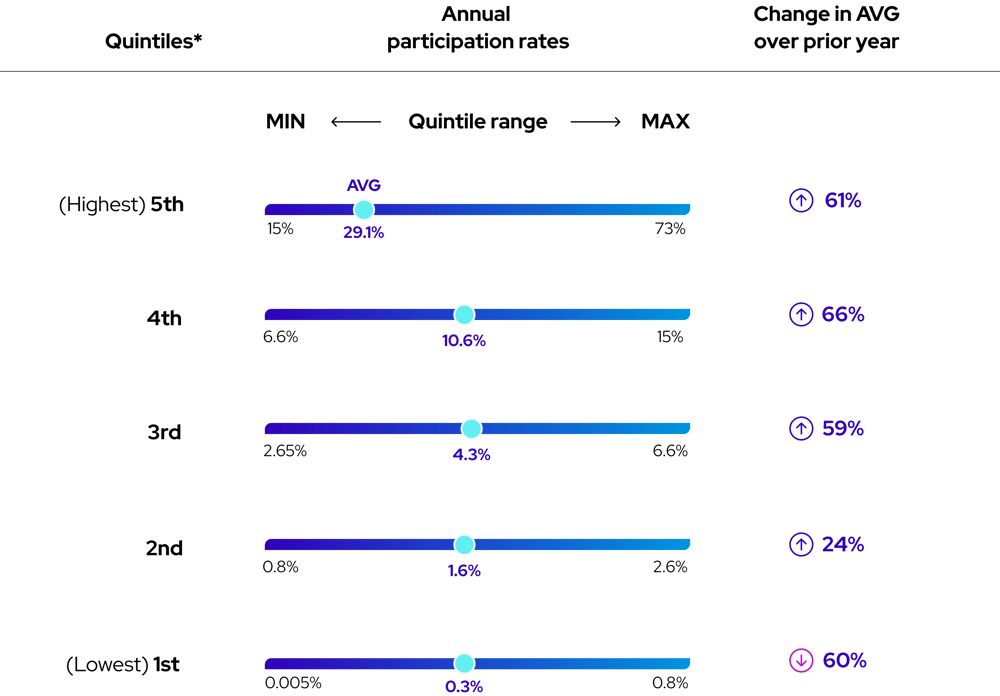
*Quintiles are based on annual volunteering participation rate. Change in average over prior year only calculated where two full years existed for fair comparison.
Who participates the most in volunteering?
For the most part, European and Asia-Pacific countries are trending ahead of North America, reflecting how volunteering in those regions is a common, accessible and culturally valued way of giving back to one’s community.
The more long-established industries like energy, utilities and waste, finance and insurance are at the top of the leaderboard, reflecting how many of the companies in these industries typically have enduring volunteering programs with high awareness and engagement.
Participation rate by country
Participation rate by industry
| Volunteers are loyal and generous | 75% of volunteers only track time with one nonprofit | 35% of volunteers donate both their own money and time | For every $1 a donor gives, a volunteer gives $1.36 |
What’s driving corporate volunteering success
The conditions are right for corporate volunteering to flourish. We’re seeing a workforce that’s seeking purpose, companies that are navigating new ways to build connectedness and a wider range of available virtual and in-person volunteer opportunities. It’s an exciting moment for companies to drive impact — and to deepen it. Our analysis revealed that the top performing companies engage employees in four key ways.
We analyzed 473 companies with active volunteering programs representing 18 countries and 12.9 million users. To qualify for this analysis, companies had to have their volunteer programs fully operational from at least April 1, 2022, to March 30, 2023.
1
Create company-supported volunteer opportunities
With company-supported volunteer opportunities, the company is the architect — it has a vision to engage volunteers in planned activities and programs.
 7.6x
7.6x
Fact
When company-supported volunteer opportunities are part of a company’s volunteer engagement strategy, the employee participation rate increases to, on average, 7.6x compared with those without these opportunities.
Act
It’s relatively uncommon for individuals to seek out a volunteer opportunity on their own. Companies benefit from creating, planning and promoting opportunities for their employees to act on.
Best in Class
Xylem is a leading global water technology company that encourages its employees to address water challenges by volunteering their time and providing pro-bono skilled expertise. To drive deeper engagement with its manufacturing employees, Xylem evolved its program by creating opportunities that could be done online, offline and via the Benevity mobile app. Promoting relevant and accessible opportunities was critical to engaging this group, and Xylem’s employees stepped up to help communities virtually and in-person, resulting in volunteer hours doubling from 53,100 to 113,100 in just one year.

2
Champion team volunteering
With team volunteering, a group of employees take the initiative to support the same cause together through their company’s volunteering program.
 7.5x
7.5x
Fact
When team volunteering opportunities are part of a company’s volunteer engagement strategy, the employee participation rate increases to, on average, 7.5x compared to those without these opportunities.
Act
Encourage employees to band together and seek out volunteer opportunities. Team leaders and middle managers can play an important role in this, leading by example and setting norms and rituals around volunteering.
Best in Class
CarMax is the largest retailer of used vehicles in the U.S., with a longstanding record of community service that’s driven by its Volunteer Team Builder program. Employees at any CarMax location can join together in a group of five or more to plan and execute volunteer activities with a qualifying nonprofit organization — which then also receives a donation from the CarMax Foundation. The result of empowering these small teams? Record-breaking levels of engagement. Over 12,000 CarMax employees have participated in these volunteer opportunities, benefitting 10,000 organizations.
![]()
3
Encourage employee-led volunteering
Employee-led volunteering comes from the ground up, when any employee creates an opportunity that is meaningful to them and mobilizes their peers and networks to join in.
 2.7x
2.7x
Fact
When employee-led volunteering opportunities are part of a company’s volunteer engagement strategy, the employee participation rate increases to, on average, 2.7x compared to those without these opportunities.
Act
There is power in personal connection – people trust their peers. Empower employees to discover and share volunteer opportunities that are meaningful to them.
Best in Class
Morningstar is a leading provider of investment research and management services that has experienced rapid growth. It wanted to harness the power and passion of its people to do good across the 30 countries in which it operates. The company identified local Community Champions from across their global offices and empowered them to identify nonprofit organizations, form partnerships and create different project opportunities in honor of Morningstar’s first annual volunteer week. Over 5,400 colleagues volunteered for 128 different local projects ranging from working with students and assisting the elderly to fighting food insecurity and restoring the environment.
![]()
4
Promote company-wide volunteering events
Often referred to as an annual “period of service,” company-wide volunteering events can be held during a particular day, week or month, when employees are encouraged to volunteer.
 2.5x
2.5x
Fact
When company-wide volunteering events are part of a company’s volunteer engagement strategy, the employee participation rate increases to 2.5x on average, compared to those without these opportunities.
Act
Promote a volunteer period of service that engages employees and ignites them to participate for a particular day, week or month.
Best in Class
Charles Schwab is the largest publicly traded investment services firm in the U.S. Its annual Schwab Volunteer Week has become a favorite employee activity. The company makes volunteering easier for everyone by offering both in-person and virtual volunteering and creating onsite drop-in events for employees who may not be able to get away from the office. Since its start in 2004 as a single-day event, the initiative has grown into a two-week, nationwide event engaging more than one-quarter of all Schwab employees and supporting over 400 nonprofits.

The path to strong performance
The structure and features of corporate volunteer programs have a direct impact on their success, and are evolving to better match today’s workforce.
Volunteer program features
In the last three years, our data shows a very high adoption of Volunteer Acts of Kindness, followed by rewards and use of the Benevity mobile app. Only 15% of companies are using minimum thresholds, which have all but become a thing of the past as companies start to build more inclusive programs that allow even one hour of volunteering to count.

Volunteer content types
For purpose-driven companies, the desire to do more will always be strong. Our analysis found a company could increase volunteer participation by an average of 12x if it allows both company-created and employee-initiated volunteer opportunities, compared with none. The more diverse the volunteering content sources — for example, from nonprofits, volunteer champions and employee resource groups — the more people are likely to be drawn into the program.

*Based on Benevity data that shows the activation of partner content in the client's Benevity employee engagement platform.
Volunteer rewards programs
Increasingly, companies are rewarding volunteers for giving their time, no matter the length, to incentivize greater participation. Rewards programs, such as Dollars for Doers♣, recognize people’s contributions and provide them with financial incentives they can direct to a nonprofit of their choice.
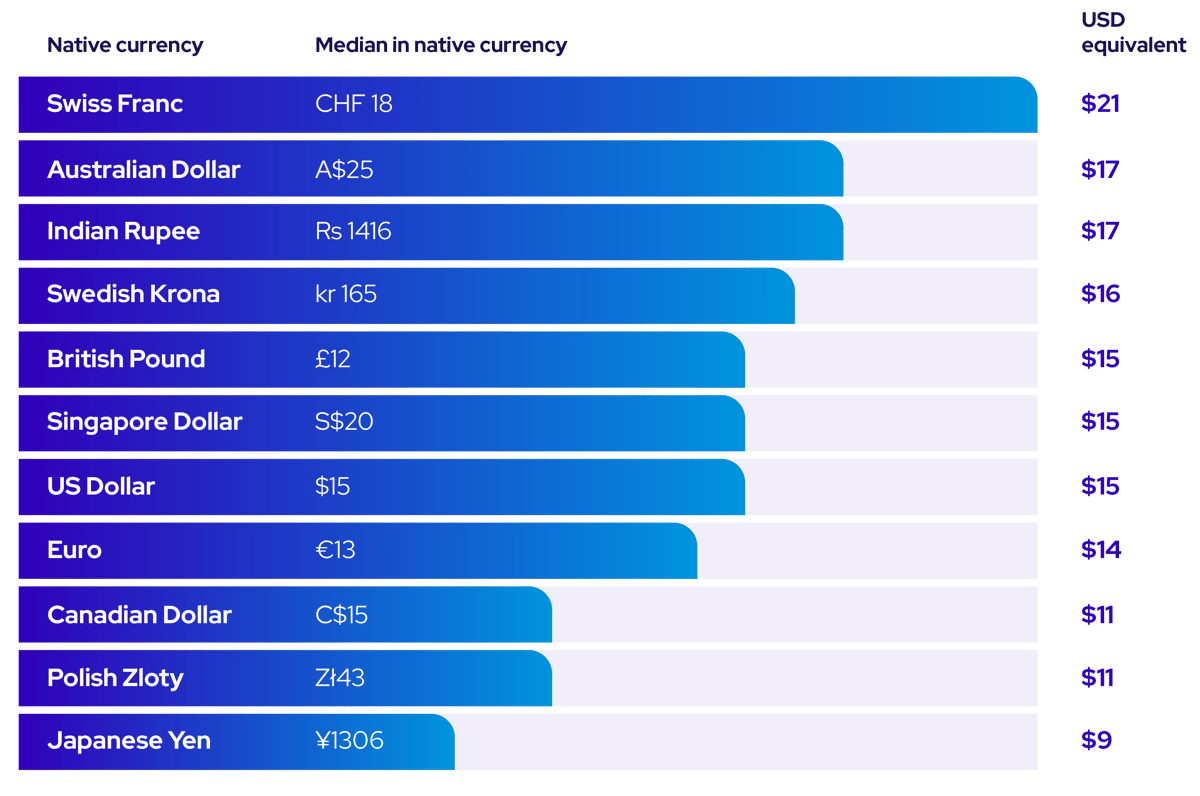
*Median reward per hour volunteered
Best in Class
Principal Financial redesigned its employee engagement program in 2022 to make it more accessible and saw an impressive 197% increase in volunteer rewards in the first three months alone. Previously, Principal had run a more restrictive matching program that required a minimum of 25 hours of service and only matched dollars to one cause, the United Way. With its reimagined program, Principal replaced the 25-hour requirement with a generous $25 per hour reward, up to $1,000 per year. Employees may earn the reward in hour increments or smaller bits of time and will receive the reward whether they volunteer with a recognized nonprofit or simply help a neighbor with their groceries. In total, Principal employees generated over $2.6 million in donations to over 2,450 causes in just four months.
![]()
|
|
The average number of volunteer hours per person is 50% higher in companies that offer rewards. |
What’s on the horizon in corporate volunteering
For purpose-driven companies, the recent surge in volunteering is a truly exciting opportunity to position themselves for long-term impact. We asked industry leaders about the state of corporate volunteering, and what to watch for next.
 |
“If there’s one thing that will make or break this industry’s effort for impact in the new era, it’s volunteering. Not the number of people who volunteer, not the hours dedicated to volunteering, not even skills-based versus hands-on volunteering. In the new era, we will make a choice: Is volunteering a mechanism for change or a mechanism for numbers? Is the objective to drive societal impact or report increased outputs? If we, as social impact professionals, choose to focus on one issue that will improve the status of every other issue we face, we’ll focus on the strategic “why.” Why are we doing this? Why does volunteering matter? And, most importantly, for whom does it matter? Without this, we are at risk of backsliding into a category of volunteering that not only lacks value but, in fact, perpetuates the very societal issues our industry exists to address.” 
Angela Parker |
 |
“Once employees engage in a skills-based volunteer opportunity, our research shows that 90% are excited and ready to donate their professional expertise again in this way within the next year. This is reflective of the many ways that skills-based volunteering provides employees with a deeper level of engagement and awareness of the impact they are able to be a part of through supporting organizations in this way. And it’s the employees who participate in skills-based volunteering who are often among the highest performing – the ones who will be your company’s future leaders.”
|
 |
“Corporate volunteering can be public service at its best. Done well, we create an incredibly thoughtful human-centered process of bringing skills to bear in service to the needs of a community. Ironically, it can also be a self-centered exercise in impact-splaining and paternalism. Organizations that come to the table curious about how they can be of service to a mission will find the rest comes easy. That is equity, empathy and engagement in action. That’s what leading nonprofit organizations are hungry for.”
|
 |
“Volunteering is one of the best ways to build bridges in a polarized climate. Getting out of our own bubbles to experience what life is like for others, volunteering alongside people who come from different walks of life and face different challenges broadens our horizons and fosters compassion and empathy that serves us, our teams, our companies and our communities. We become better people while bettering the people around us. As corporate purpose leaders, let us not lose the opportunity to be a source of unification and de-polarization by promoting volunteering in the years to come.”
|
Learn how to create community and strengthen your culture with volunteering.
Get started
Sustaining volunteer impact
65%
of volunteers were new in the past year.
In the coming years, volunteering will continue to evolve. In a hybrid world, more companies will focus on the social value of their efforts, alongside their investments in big cultural moments that promote and celebrate giving back.
Clearly companies' investments in promoting events and opportunities are successfully attracting new volunteers at a notable rate. However, retaining them remains a challenge.
Creating a culture of sustained volunteering means:
- Engaging people with events and small actions they can take.
- Nurturing interest in giving back through team-based and ongoing opportunities.
- Deepening impact through skills-based or longer-term volunteer projects.
- Encouraging volunteers to share their stories to inspire others to get involved.
Data sources
Data and statistics cited in this report largely originate from the Benevity platform, where the aggregation of all activities happening in our software by our clients and their people are recorded, classified and stored.
For the section labeled “What’s driving corporate volunteering success”, our final comparison dataset included 473 companies with active volunteering programs that were fully operational from April 1, 2022 through March 31, 2023. In all, these companies spanned 18 countries and represented 12.9 million individual users of the Benevity platform. The participation quintiles were determined using the annual volunteering participation rate for the 473 companies and the calculated percentile cutoffs. Companies in each quintile were then analyzed for the presence, absence or level of a feature or program element to assess the relationship between the quintile level and the prevalence of that element.
Glossary
❤ Volunteer Acts of KindnessVolunteer Acts of Kindness are when a person dedicates their time and energy to an initiative or a good deed that is not associated with a specific nonprofit. It could include things like helping a neighbor in need, learning about a particular topic or participating in an activity like a park cleanup.
♦ Volunteering participation rate
Volunteering participation rate is the percentage of total users who were part of Benevity clients’ employee volunteering programs and tracked volunteer time at least once in the year.
♣ Rewards program
A rewards program, such as Dollars for Doers, is a way for a company to recognize and encourage their employees’ contributions by providing them with financial incentives they can direct to a nonprofit of their choice.


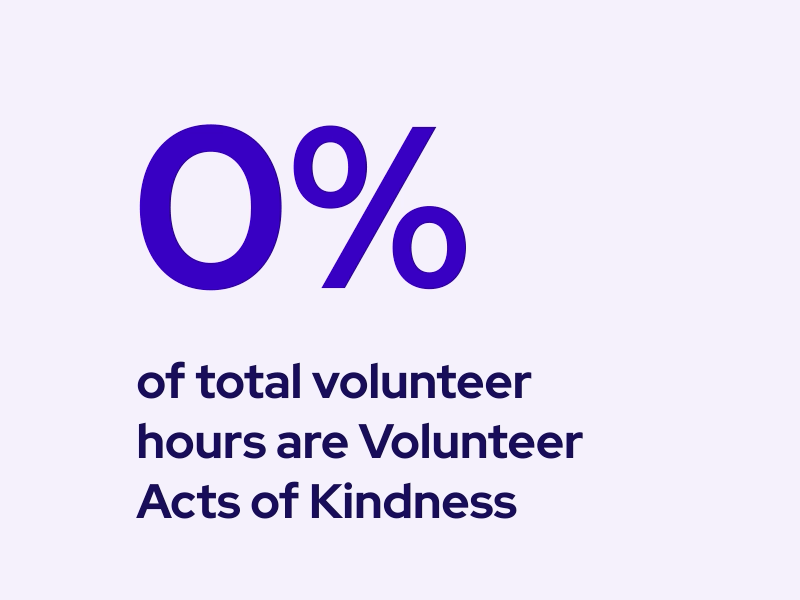
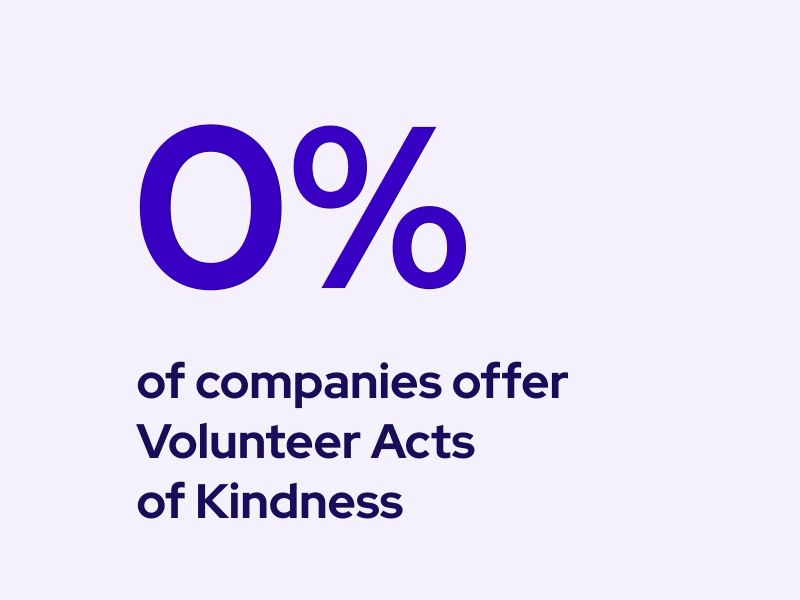
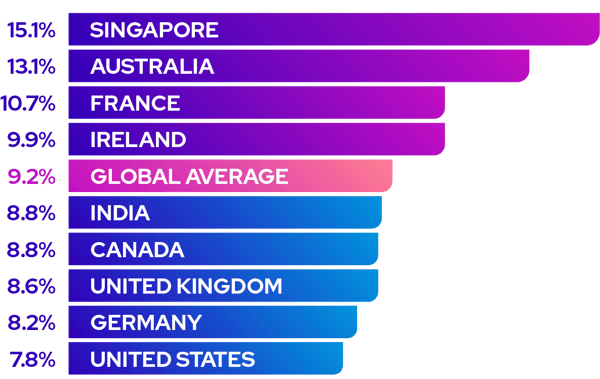
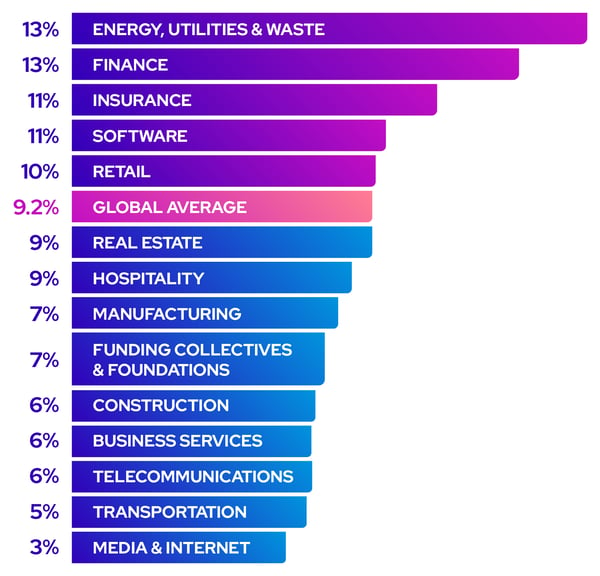
 Lindsay Gruber
Lindsay Gruber Jude O'Reilley
Jude O'Reilley Sona Khosla
Sona Khosla